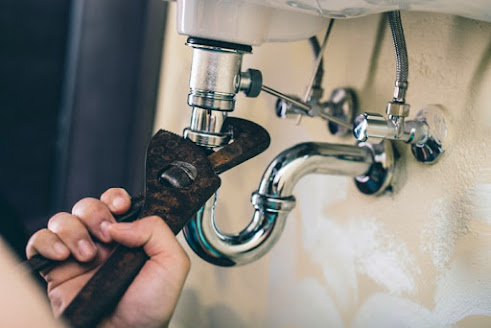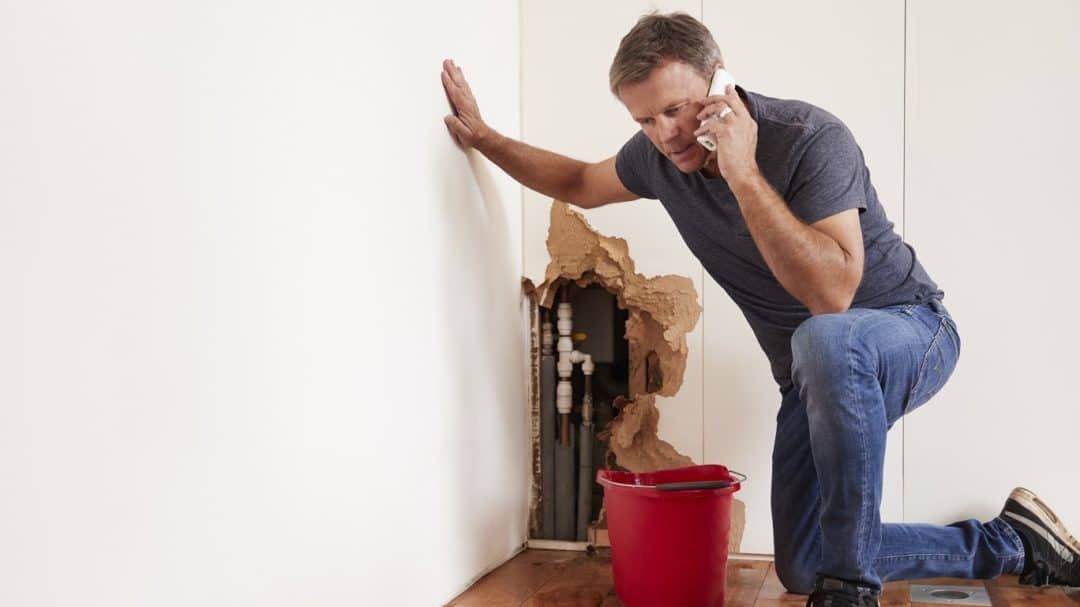Why is My House Making Odd Plumbing Noises?
Why is My House Making Odd Plumbing Noises?
Blog Article
What're your thoughts regarding How To Fix Noisy Pipes?

To diagnose noisy plumbing, it is important to establish initial whether the undesirable noises occur on the system's inlet side-in other words, when water is turned on-or on the drain side. Noises on the inlet side have differed reasons: extreme water pressure, used shutoff as well as tap parts, incorrectly connected pumps or various other home appliances, incorrectly positioned pipe bolts, as well as plumbing runs including way too many limited bends or other constraints. Sounds on the drain side usually come from inadequate place or, as with some inlet side sound, a design having tight bends.
Hissing
Hissing sound that occurs when a tap is opened slightly normally signals extreme water pressure. Consult your neighborhood water company if you suspect this issue; it will have the ability to tell you the water stress in your location as well as can install a pressurereducing shutoff on the incoming supply of water pipe if essential.
Thudding
Thudding noise, often accompanied by shivering pipes, when a faucet or device valve is turned off is a problem called water hammer. The noise and resonance are caused by the resounding wave of pressure in the water, which suddenly has no area to go. In some cases opening a shutoff that discharges water promptly into a section of piping including a constraint, joint, or tee fitting can generate the exact same problem.
Water hammer can usually be treated by installing installations called air chambers or shock absorbers in the plumbing to which the problem shutoffs or faucets are attached. These devices permit the shock wave produced by the halted circulation of water to dissipate in the air they have, which (unlike water) is compressible.
Older plumbing systems may have brief vertical sections of capped pipeline behind walls on tap competes the same objective; these can eventually loaded with water, lowering or ruining their performance. The treatment is to drain the water supply completely by turning off the main water system shutoff and opening up all taps. Then open up the main supply valve and also close the taps one by one, starting with the tap nearest the valve as well as finishing with the one farthest away.
Chattering or Shrilling
Extreme chattering or screeching that occurs when a valve or tap is activated, which usually vanishes when the fitting is opened completely, signals loose or faulty inner components. The solution is to change the shutoff or tap with a brand-new one.
Pumps and devices such as washing machines and dishwashing machines can move electric motor noise to pipelines if they are poorly attached. Connect such things to plumbing with plastic or rubber hoses-never rigid pipe-to isolate them.
Various Other Inlet Side Noises
Squeaking, squealing, scratching, snapping, and tapping usually are caused by the development or contraction of pipes, generally copper ones providing warm water. The audios take place as the pipelines slide versus loosened bolts or strike neighboring home framework. You can commonly determine the area of the trouble if the pipelines are subjected; just comply with the noise when the pipes are making sounds. More than likely you will certainly discover a loosened pipeline wall mount or a location where pipelines lie so close to floor joists or other mounting items that they clatter versus them. Connecting foam pipe insulation around the pipes at the point of contact should remedy the trouble. Make certain bands as well as hangers are safe and provide ample assistance. Where possible, pipe fasteners need to be affixed to large architectural elements such as foundation wall surfaces rather than to framing; doing so lessens the transmission of resonances from plumbing to surface areas that can magnify and transfer them. If affixing fasteners to framing is inescapable, wrap pipelines with insulation or other resilient product where they call fasteners, and also sandwich completions of new fasteners in between rubber washers when installing them.
Dealing with plumbing runs that deal with flow-restricting limited or many bends is a last hope that ought to be undertaken just after getting in touch with a knowledgeable plumbing service provider. Regrettably, this situation is relatively usual in older homes that may not have been constructed with indoor plumbing or that have seen numerous remodels, particularly by amateurs.
Drain Sound
On the drain side of plumbing, the principal objectives are to eliminate surface areas that can be struck by dropping or rushing water and also to protect pipes to have inevitable sounds.
In new building and construction, bathtubs, shower stalls, bathrooms, and wallmounted sinks and also basins need to be set on or versus resilient underlayments to lower the transmission of noise through them. Water-saving bathrooms and taps are less loud than traditional models; mount them instead of older kinds even if codes in your area still allow using older fixtures.
Drainpipes that do not run up and down to the basement or that branch right into horizontal pipeline runs supported at flooring joists or other mounting present especially troublesome sound problems. Such pipelines are large sufficient to radiate significant resonance; they likewise lug considerable quantities of water, which makes the scenario even worse. In new building and construction, specify cast-iron soil pipelines (the huge pipes that drain bathrooms) if you can manage them. Their massiveness includes a lot of the sound made by water passing through them. Also, prevent transmitting drains in walls shown rooms and also spaces where individuals collect. Walls including drainpipes ought to be soundproofed as was explained previously, making use of double panels of sound-insulating fiberboard as well as wallboard. Pipes themselves can be covered with unique fiberglass insulation created the purpose; such pipes have an invulnerable vinyl skin (sometimes including lead). Outcomes are not constantly adequate.
WHY IS MY PLUMBING MAKING SO MUCH NOISE?
This noise indeed sounds like someone is banging a hammer against your pipes! It happens when a faucet is opened, allowed to run for a bit, then quickly shut — causing the rushing water to slam against the shut-off valve.
To remedy this, you’ll need to check and refill your air chamber. Air chambers are filled with — you guessed it — air and help absorb the shock of moving water (that comes to a sudden stop). Over time, these chambers can fill with water, making them less effective.
You’ll want to turn off your home’s water supply, then open ALL faucets (from the bathroom sink to outdoor hose bib) to drain your pipes. Then, turn the water back on and hopefully the noise stops! If you’re still hearing the sound, give us a call to examine further.
Whistles
Whistling sounds can be frustrating, as sometimes the source isn’t easily identified. However, if you can pinpoint which faucet or valve that may be the cause, you’ll likely encounter a worn gasket or washer — an easy fix if you replace the worn parts!Whistling sounds from elsewhere can mean a number of things — from high water pressure to mineral deposits. Your best plan of attack here is to give our plumbing experts a call. We’ll be able to determine where the noise is coming from and what the cause may be, then recommend an effective fix!
Cracks or Ticks
Cracking or ticking typically comes from hot water going through cold, copper pipes. This causes the copper to expand resulting in a cracking or ticking sound. Once the pipes stop expanding, the noise should stop as well.
Pro tip: you may want to lower the temperature of your water heater to see if that helps lessen the sound, or wrapping the pipe in insulation can also help muffle the noise.
Bangs
Bangs typically come from water pressure that’s too high. To test for high water pressure, get a pressure gauge and attach it to your faucet. Water pressure should be no higher than 80 psi (pounds per square inch) and also no lower than 40 psi. If you find a number greater than 80 psi, then you’ve found your problem!
Next step is to give us a call in order to install a pressure regulator. Trust us, you don’t want to wait to resolve this issue. Not only is the sound annoying, but high water pressure can be destructive to your home — including damaging certain appliances, like your washer and dishwasher.
Dripping
You might be accustom to the slow quiet drip your kitchen faucet makes. You might have even tuned out your bathroom sink dripping and drabbing all day long — but it’s time to find its cause.
A slow drip could signify a variety of easy to fix issues, such as a worn out O ring, or loose part. And by ignoring the drip, you could be wasting up to 2,000 gallons of water a year! So start conserving water — get it looked at ASAP.
https://www.pwessig.com/blog/2018/december/why-is-my-plumbing-making-so-much-noise-/

Do you really like reading about How To Fix Noisy Pipes? Make a remark directly below. We would be interested to listen to your ideas about this blog posting. We are looking forward that you visit us again later on. Loved our blog entry? Please share it. Help other people locate it. Thank you so much for taking the time to read it.
Call Us Now Report this page